#chemicalreact
Explore tagged Tumblr posts
Text
When sodium hypochlorite (bleach) solution is added to luminol, a chemical reaction occurs that releases energy in the form of light. This is called chemiluminescence. The bleach solution acts as an oxidizing agent, which means it takes electrons away from the luminol molecule. This causes the luminol molecule to become excited, and it releases the energy as light.
🎥 Courtesy: Kendra Frederick
The luminol molecule is made up of two amino groups, a carbonyl group, and an azo group. The amino groups are electron-rich, while the carbonyl group is electron-poor. The azo group is a conjugated system, which means that the electrons in the double bonds can move freely from one atom to another.
When sodium hypochlorite (bleach) solution is added to luminol, the bleach molecules react with the amino groups of the luminol molecule. This reaction takes electrons away from the luminol molecule, which causes the luminol molecule to become oxidized. The oxidized luminol molecule is in an excited state, which means that it has more energy than it normally does.
The excited luminol molecule then releases the extra energy as light. This light is called chemiluminescence. The light emitted by the chemiluminescence reaction is blue because the luminol molecule has a blue fluorescence.
The chemiluminescence reaction between luminol and sodium hypochlorite is catalyzed by the presence of a metal ion, such as iron or copper. The metal ion helps to stabilize the excited state of the luminol molecule, which makes it more likely to release the extra energy as light.
The chemiluminescence reaction is very sensitive to impurities, so it is important to use pure chemicals. The reaction can also be affected by the pH of the solution. The optimal pH for the reaction is around 9.
The chemiluminescence reaction between luminol and sodium hypochlorite can be used to detect blood, as the iron in hemoglobin can catalyze the reaction. The reaction is also used in some commercial products, such as glow sticks and emergency lights.
I hope you enjoyed learning about this. ❤️🙏
#chemiluminescence#luminol#bleach#science#chemistry#scienceexperiment#glowing#light#excitedstate#oxidation#chemicalreact
5K notes
·
View notes
Text
The Beauty of Glowing Chemistry
There’s something fascinating about watching chemistry come to life—literally. Reactions that produce light, like chemiluminescence and bioluminescence, remind us that science isn't just useful—it's beautiful. ✨ These luminous reactions spark wonder and curiosity. Who knew that molecules dancing together could create such magic? 💡 Which glowing reaction has fascinated you the most?
#Chemistry#Science#Chemiluminescence#Bioluminescence#ChemicalReactions#GlowChemistry#LightEmittingReactions#MolecularMagic#ScienceIsBeautiful#ScienceLovers#WonderOfScience#TheBeautyOfScience#GlowingReactions#MesmerizingScience#FascinatingFacts#ScienceAesthetics#IlluminatingIdeas#ScienceMagic#ScienceWonder#NatureAndScience#ScienceEducation#STEMEducation#LearnScience#ScienceCommunication#EducationalContent#ChemistryClass#STEMLearning#ScienceInspiration#CuriousMinds#KnowledgeIsPower
28 notes
·
View notes
Text

5 notes
·
View notes
Text
O Level Chemistry Tuition | Achieve Exam Success with SG Chemistry
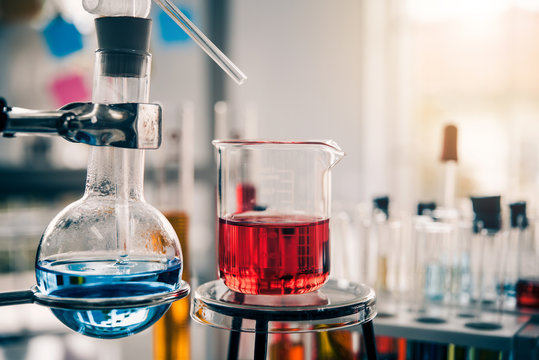
Unlock your full potential with O Level Chemistry Tuition at SG Chemistry. A trusted name in science education in Singapore. Our special programs are made to build a solid understanding of chemistry. Helping students understand difficult concepts and excel in exams. With experienced tutors, proven teaching methods, and a strong focus on results, SG Chemistry offers an organised learning path for students aiming for distinction. Discover how our O Level Chemistry Tuition can make a difference in your academic journey. Join hundreds of students achieving top results with SG Chemistry. Empower your success today!
#OLevelChemistry#ChemistryTuition#OLevelTuition#ChemistryHelp#ChemistryClass#ScienceEducation#StudyChemistry#TuitionCenter#ExamPrep#ChemicalReactions#OlevelStudents#ChemistryLessons#StudentSuccess#LearningScience#AcademicSuccess#InteractiveLearning#ChemistryUnderstanding#TestPreparation#STEMEducation
0 notes
Text
#1363 What do enzymes do?

What do enzymes do? Enzymes are proteins that start and speed up chemical reactions in the body. Without enzymes, we could not survive. Without them, our digestion, respiration, and even muscles and nerves would not be able to function fast enough for us to live. There is no exact number for how many enzymes there are, or even for how many enzymes there are in the human body. Estimates range from as low as 2,000 to as high as 75,000, and there might even be more than that. There are so many enzymes because each one only does a specific job, and there are so many chemical reactions that happen in our bodies to keep us functioning on a day to day basis. All of these enzymes exist within our cells. An enzyme is a catalyst for a chemical reaction. A catalyst is a substance that speeds up a chemical reaction. They do this by lowering the amount of energy required for the reaction to take place. An important characteristic of a catalyst is that they are not destroyed in the process. Enzymes can be used again and again to speed up the same reaction. If we didn’t have any enzymes, the chemical processes would still happen, but they would be so slow and require so much energy that we would not be able to function usefully. Here are some examples of the processes in which enzymes are involved. They break down carbohydrates into sugars that the body can use for fuel. They break down fats into fatty acids. They unwind the DNA in our cells so that it can be replicated. They break down toxins in our livers. They help regulate our hormones. There are thousands of other processes that they are involved in as well. Enzymes are mostly made of proteins, which are in turn made of chains of amino acids. These proteins are able to bind with the molecules that they are going to work with. These molecules are called a substrate, and the enzyme has an active site that the substrate will bind to. Originally, scientists thought that the active site on an enzyme was a specific shape and only molecules with the same shape could attach to it. However, recent research has shown that some enzymes can connect to molecules that don’t have the same shape attachment. It seems that the enzymes are able to alter the shape of the active site so it can fit multiple molecules. When an enzyme attaches to molecules, it lowers the activation energy that is needed to start the reaction. It basically does that by making it much easier for the chemical reaction to take place. Molecules need energy to move. If the two molecules are left to chance, they may or may not come together and start the chemical reaction. Enzymes can attach to the two molecules and bind them together. This reduces the amount of time needed for the molecules to find each other, and it reduces the amount of energy needed by the molecules because the enzyme does all of the heavy lifting. The enzyme also positions the molecules correctly so they don’t need to expend more energy fighting any of the forces that might keep them apart. Once the reaction has taken place, the new molecules are released from the enzyme, and it goes looking for more. Enzymes need certain temperatures and certain pH conditions before they can work. If you get sick and have a fever, it can stop some enzymes from functioning. And the enzymes in your stomach will only work if the pH is acidic enough. If you took them out of the stomach, they would cease to function. And some people don’t have certain enzymes. Lactose intolerance is caused by a lack of the enzyme lactase. All mammals produce this enzyme when they are babies. It allows them to break down lactase, which is a sugar found in milk. That is vital because baby mammals get the majority of their nutrition from their mother’s milk. However, as they grow up, they stop needing milk and stop producing lactase. A lot of humans have evolved to continue producing the enzyme, even in adulthood, which is why they can drink milk. Those who don’t produce it cannot drink milk and are lactose intolerant. We have trillions of enzymes in our bodies, and without them, we would be a non-functioning mess. And this is what I learned today. - #1257 Is there anything that can eat plastic? - #645 How quickly do bones biodegrade? - #515 Why can you test for drugs in urine? - #208 How do cows produce milk? - #305 When happens when you are bitten by a venomous snake? Sources https://www.acs.org/education/celebrating-chemistry-editions/2021-ncw/enzymes.html https://bio.libretexts.org/Bookshelves/Introductory_and_General_Biology/Introductory_Biology_(CK-12)/01_Introduction_to_Biology/1.18_Enzyme_Function https://www.aatbio.com/resources/faq-frequently-asked-questions/how-do-enzymes-speed-up-a-chemical-reaction https://www.livescience.com/45145-how-do-enzymes-work.html https://my.clevelandclinic.org/health/articles/21532-enzymes https://www.medicalnewstoday.com/articles/319704#cofactors https://www.papertrell.com/apps/preview/The-Handy-Biology-Answer-Book/handyanswerbook/How-many-enzymes-are-in-the-human-body/001137031/content/SC/52caff2582fad14abfa5c2e0_default.html https://en.wikipedia.org/wiki/Enzyme https://www.mayoclinic.org/diseases-conditions/lactose-intolerance/symptoms-causes/syc-20374232 Photo by Jorge Sepúlveda: https://www.pexels.com/photo/crop-chemist-mixing-liquids-in-flask-during-work-in-lab-4299462/ Read the full article
0 notes
Text
What Makes Acids and Bases React 2025

What Makes Acids and Bases React 2025
Book-Based Explanation (University Level) Acids and bases react due to the fundamental chemical interactions involving protons (H⁺ ions) and hydroxide ions (OH⁻ ions). This is best understood through several key theories that explain their behavior: 1. Arrhenius Theory - Acid: A substance that increases the concentration of H⁺ ions in aqueous solution. - Base: A substance that increases the concentration of OH⁻ ions in aqueous solution. - Reaction: When an acid and base are mixed, H⁺ from the acid reacts with OH⁻ from the base to form water (H₂O). This is called a neutralization reaction. Example: HCl (aq) + NaOH (aq) → NaCl (aq) + H₂O (l) 2. Brønsted-Lowry Theory - Acid: Proton donor. - Base: Proton acceptor. - This theory expands on acid-base behavior even in non-aqueous solutions. Example: NH₃ + H₂O → NH₄⁺ + OH⁻ Here, water donates a proton (acting as an acid) and ammonia accepts it (acting as a base). 3. Lewis Theory - Acid: Electron pair acceptor. - Base: Electron pair donor. - This theory is more generalized and includes a wider range of chemical reactions. Example: BF₃ (acid) + NH₃ (base) → F₃B←NH₃ In this interaction, ammonia donates an electron pair to boron trifluoride, forming a coordinate covalent bond. Why Do They React? - The driving force of an acid-base reaction is the movement of protons and/or electrons to achieve a more stable, lower-energy state. - These reactions are often exothermic, releasing energy. - The products are typically more stable than the reactants (e.g., water and a salt in neutralization reactions).




Easy Explanation (With Examples) Let’s make this super simple! Think of acids as being a little like "proton throwers" – they have extra protons (H⁺ ions) and want to get rid of them. Bases are like "proton catchers" – they want to grab those protons. Simple Analogy: Imagine acids as people giving away basketballs (protons), and bases are players trying to catch those balls. When a basketball (proton) is passed from the acid to the base, they both feel good – this is the chemical reaction happening! Everyday Example: - Vinegar (acid) reacts with baking soda (base). - It bubbles and fizzes because a chemical reaction happens that makes carbon dioxide gas. Equation (simplified): Acid + Base → Salt + Water Another Simple One: - Lemon juice (acid) and soap (base) can neutralize each other. - The sour and slippery cancel out, making the mixture neutral. So, acids and bases react because one wants to give something (a proton), and the other wants to take it. Together, they form something more balanced. Disclaimer: The easy explanation is designed to help you understand the basic concept using simple words and analogies. However, if you're writing an answer for an exam or assignment, please stick to the book-based explanation above. We’re just trying to make the learning process fun and clear. Scoring less by using simplified answers in exams is not our responsibility. External Resource: For a deeper understanding, you can read the Wikipedia page: Acid–Base Reaction https://en.wikipedia.org/wiki/Acidbase_reaction Related Articles from EdgyThoughts.com: - What If Quantum Computers Could Simulate an Entire Human Brain? https://edgythoughts.com/what-if-quantum-computers-could-simulate-an-entire-human-brain - How Do Enzymes Control Metabolism 2025 https://edgythoughts.com/how-do-enzymes-control-metabolism-2025 Read the full article
#20250101t0000000000000#2025httpsedgythoughtscomhowdoenzymescontrolmetabolism2025#acidbasereaction#ammonia#analogy#aqueoussolution#basechemistry#basketball#behavior#borontrifluoride#brnstedlowryacidbasetheory#carbon#carbondioxide#catcher#chemicalbond#chemicalreaction#chemicalsubstance#chemistry#concentration#concept#coordinatecovalentbond#covalentbond#edgythoughtscom#electron#electronacceptor#electronpair#energy#enzyme#exothermicprocess#explanation
0 notes
Text
WBCHSE Classification Of Elements And Periodicity In Properties Question And Answers
#Chemistry#Science#ChemicalReactions#PeriodicTable#MolecularScience#ClassificationOfElementsAndPeriodicityInPropertiesQuestionAndAnswers
0 notes
Text
youtube
#ChemistrySolutions#ScienceInAction#MoleculesAtWork#SolventAndSolute#SolutionScience#ChemicalMixtures#LearnChemistry#HomogeneousMixtures#ChemistryExplained#SolutionsInChemistry#MolarityMatters#ScienceMadeSimple#ChemicalReactions#ExploringSolutions#SolvingChemistry#Youtube
0 notes
Text

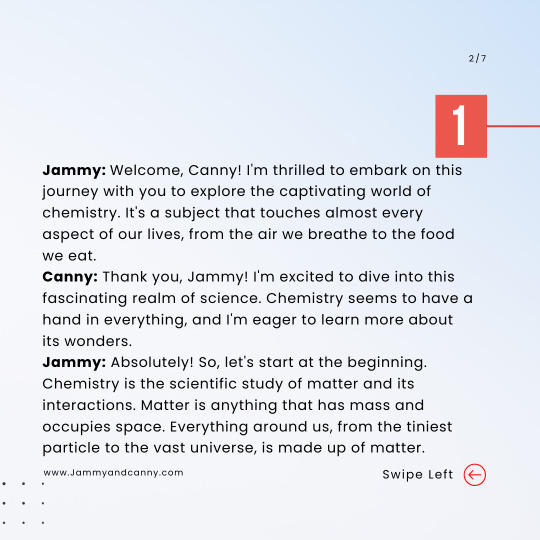

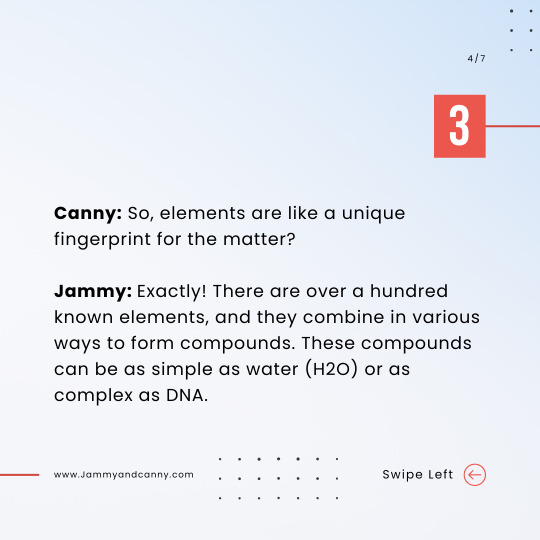
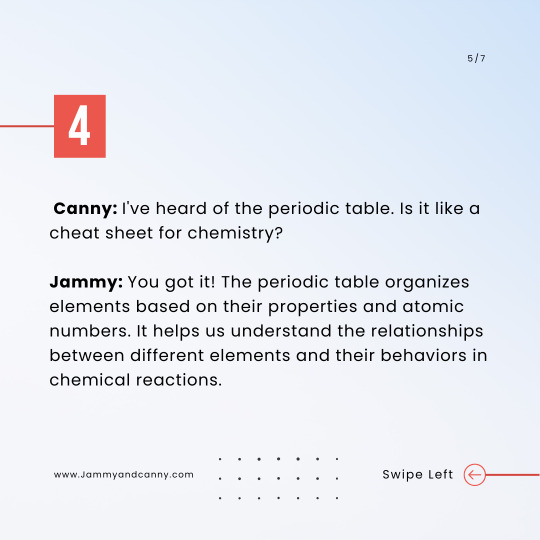
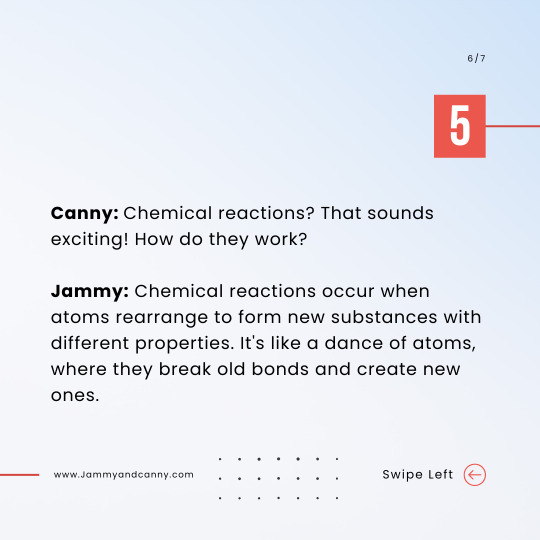

🔬 Dive into the fascinating world of Chemistry through a conversation between an expert and an enthusiast! Uncover the mysteries of matter, reactions, and the building blocks of life. 🌟🧪
#Chemistry#ExpertAndEnthusiast#ScienceExploration#ChemicalReactions#STEM#ScientificDiscovery#MolecularScience#LabLif
0 notes
Text
SG Chemistry | A Level Chemistry Tuition for Serious Students

Our tutors are experienced specialists who break down difficult chapters into digestible lessons. Students learn through mind maps, pictorial notes, and diagrams designed to reinforce conceptual clarity and aid long-term memory core features of our A Level Chemistry Tuition approach.
Structured Learning Aligned with the H2 Syllabus:
SG Chemistry’s A Level Chemistry Tuition is tailored to the H2 curriculum, covering:
Thermodynamics and energetics
Chemical kinetics
Chemical equilibrium
Organic chemistry & mechanisms
Redox reactions and electrochemistry
Each topic is taught using structured techniques. Start with fundamental concepts and move to application and problem-solving. Tutors use quality, proper materials curated specifically for A Level standards.
Read more: SG Chemistry | A Level Chemistry Tuition for Serious Students
#ALevelChemistry#ChemistryTuition#ChemistryHelp#StudyChemistry#PrivateTuition#ScienceTutor#ChemistryClass#StudentSuccess#LearnChemistry#ChemistryTopics#ExamPrep#CollegeReady#STEMEducation#Tutor#EducationSupport#ChemicalReactions#AcademicSuccess#OnlineTuition#ScientificLearning
0 notes
Text
What is Chemical Reaction?
Chemical reactions are the processes by which substances transform into new materials with different chemical compositions. These reactions involve the breaking and forming of chemical bonds between atoms, leading to the creation of products different from the reactants. The study of chemical reactions is crucial in understanding the behaviour of matter and the changes it undergoes. Enroll now at Tutoroot.
0 notes
Text
Liquid Mercury: The Cutting-Edge Innovation by Telematique Limited
Telematique Limited, a leader in cutting-edge technology solutions, is revolutionizing the industry with its latest breakthrough Liquid Mercury. Designed to enhance efficiency, streamline operations, and push the boundaries of modern computing and automation, Liquid Mercury represents a bold step forward in technological innovation.

#LiquidMercury#MercuryScience#ScienceExperiment#elementaryscience#ChemicalReactions#PhysicsFun#Education#ScienceInspiration#PhysicsExperiment#LiquidMetal#MetallicMatter#FoamyExplosions#ChemistryLove#ScienceFacts#ScienceDemonstration#STEM#ScienceVideo#LearningThroughPlay#InteractiveScience#DiscoverScience
0 notes
Text
How Do Enzymes Control Metabolism 2025

How Do Enzymes Control Metabolism 2025
Enzymes are the unsung heroes of metabolism—tiny biological catalysts that drive every chemical reaction in the body with precision and efficiency. Without them, life as we know it wouldn’t exist. In 2025, our understanding of enzymes and their control over metabolic processes has deepened through advances in biotechnology, genetics, and molecular medicine. Book-Level Explanation (University Standard) Metabolism refers to all chemical reactions that occur within living organisms to maintain life. These reactions are divided into two categories: - Catabolism – the breakdown of molecules to release energy - Anabolism – the synthesis of compounds needed by cells Enzymes are biological catalysts—mostly proteins—that speed up metabolic reactions by lowering the activation energy required for the reaction to occur. They are highly specific to substrates and operate under optimal pH and temperature conditions. 1. Enzyme Structure and Function Each enzyme has an active site that binds to a specific substrate. This interaction forms an enzyme-substrate complex, which then undergoes transformation into a product. After the reaction, the enzyme remains unchanged and ready to catalyze another reaction. 2. How Enzymes Regulate Metabolism Enzymes control metabolism through various mechanisms: - Allosteric Regulation: Enzymes can have binding sites other than the active site called allosteric sites. When molecules bind here, they can enhance or inhibit enzyme activity, thereby controlling the metabolic rate. - Feedback Inhibition: This is a classic metabolic control mechanism. When the end product of a metabolic pathway accumulates, it can inhibit an enzyme involved earlier in the pathway, thereby slowing or halting the reaction chain. - Cofactors and Coenzymes: Many enzymes require non-protein molecules to function. These can be metal ions (cofactors) or organic molecules like vitamins (coenzymes). - Gene Expression: The synthesis of enzymes can be regulated at the transcriptional or translational level, determining how much of an enzyme is present in a cell at a given time. - Compartmentalization: In eukaryotic cells, different enzymes are localized in specific organelles (e.g., mitochondria, lysosomes), which keeps reactions organized and tightly controlled. 3. Enzymes and Metabolic Pathways Metabolic reactions occur in sequences called pathways. Each step is catalyzed by a specific enzyme. For instance: - Glycolysis: The breakdown of glucose involves 10 enzyme-catalyzed steps. - Krebs Cycle: In the mitochondria, this cycle processes products of glycolysis to generate ATP. Key regulatory enzymes in these pathways determine the rate and direction of metabolism. 4. Enzyme Kinetics Michaelis-Menten kinetics describe how enzyme activity depends on substrate concentration: v = frac{{V_{text{max}}}}{{K_m + }} Where: - = rate of reaction - = maximum rate - = substrate concentration - = substrate concentration at which reaction rate is half of Changes in these parameters help explain how drugs, mutations, or inhibitors affect metabolic control.




Easy Explanation (Simple and Clear) Think of metabolism like a factory. In this factory, you have many assembly lines working at once—some build things (anabolism), and others take things apart (catabolism) to get energy. Now, who’s doing all the work? That’s right—enzymes! Here’s the simple idea: - Enzymes are like smart workers or machines in your body’s factory. - Each enzyme does one job—very quickly and very accurately. - If an enzyme isn't working right, the whole system slows down or stops. How do they help? - They make reactions go faster. Imagine needing to break a log—it would take hours by hand. But if you had an axe (the enzyme), it would be quick and easy. - Enzymes choose what happens and when. They only work on specific jobs and ignore everything else. - Some enzymes turn "on" or "off" depending on what the body needs, just like machines that only run when needed. Real-life example: When you eat, enzymes in your saliva, stomach, and intestines break down food into sugars, amino acids, and fats. Then, other enzymes help turn those nutrients into energy for your muscles, brain, and everything else. Scientific Developments in 2025 Modern research uses AI-based modeling to understand enzyme function and predict metabolic disorders. Synthetic biology now allows scientists to engineer enzymes with altered functions for industrial and medical applications. CRISPR-based tools also enable precise regulation of enzyme production, offering new treatments for metabolic diseases. Final Thoughts Enzymes are the master regulators of life’s chemistry. They control metabolism by determining which reactions happen, how fast they occur, and when they stop. As we move further into the molecular era of medicine and biotechnology, understanding how enzymes control metabolism will become increasingly crucial to solving diseases and optimizing health. External Reference Link: For a deeper understanding, visit the Wikipedia page on enzymes: https://en.wikipedia.org/wiki/Enzyme Internal Blog Recommendations from EdgyThoughts.com: - Why Do Cells Age and Die 2025 https://edgythoughts.com/why-do-cells-age-and-die-2025 - How Does Dopamine Influence Motivation 2025 https://edgythoughts.com/how-does-dopamine-influence-motivation-2025 Disclaimer: The simplified explanation above is designed to help you understand the concept clearly. However, for exams or academic submissions, always rely on the full, textbook-level content. We aim to help you learn, not to provide shortcuts that could impact your scores. Read the full article
#20250101t0000000000000#2025httpsedgythoughtscomhowdoesdopamineinfluencemotivation2025#2025httpsedgythoughtscomwhydocellsageanddie2025#activationenergy#activesite#adenosinetriphosphate#allostericregulation#aminoacid#anabolism#assemblyline#bindingsite#biology#biosynthesis#biotechnology#catabolism#catalysis#cell(biology)#cellularcompartment#chemicalcompound#chemicalreaction#chemicalsubstance#chemistry#citricacidcycle#cofactorbiochemistry#concentration#concept#disease#dopamine#edgythoughtscom#energy
0 notes
Text
WBCHSE Class 11 Physics For Simple Harmonic Motion: Definition, Examples
#Chemistry#Science#ChemicalReactions#PeriodicTable#MolecularScience#SimpleHarmonicMotionDefinitionExamples
0 notes
Text
Catalyzing Change: The Evolution of Emissions Control in Automobiles
This section provides an overview of automotive catalytic converters, highlighting their pivotal role in reducing harmful emissions from vehicle exhaust. It introduces the fundamental principles behind catalytic conversion and its significance in modern automotive engineering.
Evolution of Catalytic Converter Technology: Trace the historical development of catalytic converter technology, from its inception in the 1970s to contemporary innovations. Discuss key milestones, breakthroughs, and regulatory drivers that have shaped the evolution of this critical automotive component.
Operating Principles and Catalytic Processes: Explore the operating principles and catalytic processes involved in automotive catalytic converters, including oxidation, reduction, and three-way catalysis. Provide a detailed explanation of how catalyst materials interact with exhaust gases to facilitate pollutant conversion.
Grab a detailed PDF with more insights: https://www.transparencymarketresearch.com/sample/sample.php?flag=S&rep_id=6787
Types of Catalytic Converters: This section categorizes catalytic converters based on their configuration, substrate material, and catalyst composition. Discuss the characteristics, advantages, and applications of each type, including ceramic monoliths, metallic substrates, and advanced formulations.
Emission Reduction Mechanisms: Delve into the mechanisms by which automotive catalytic converters mitigate harmful emissions, including carbon monoxide (CO), nitrogen oxides (NOx), and hydrocarbons (HC). Explain the chemical reactions and conversion processes involved in each pollutant's elimination.
Catalyst Materials and Composition: Analyze the catalyst materials used in automotive catalytic converters, such as platinum (Pt), palladium (Pd), and rhodium (Rh), along with their alloys and supports. Discuss the role of each material in catalytic activity, durability, and cost-effectiveness.
Integration with Engine Management Systems: Explore the integration of catalytic converters with modern engine management systems to optimize combustion efficiency and emissions performance. Discuss the role of sensors, feedback mechanisms, and catalytic heating strategies in achieving regulatory compliance.
Durability and Performance Considerations: Address durability and performance considerations in automotive catalytic converters, including thermal stability, catalyst aging, poisoning, and contamination. Discuss strategies for improving longevity, efficiency, and reliability under diverse operating conditions.
Regulatory Compliance and Emissions Standards: Provide an overview of global emissions standards and regulatory frameworks governing automotive catalytic converters. Discuss the role of government agencies, industry associations, and technological advancements in driving compliance and sustainability.
Innovations and Emerging Technologies: Highlight recent innovations and emerging technologies in automotive catalytic converters, such as nanostructured catalysts, catalytic coatings, and advanced exhaust aftertreatment systems. Discuss their potential impact on emissions reduction and vehicle performance.
Environmental and Economic Implications: Evaluate the environmental and economic implications of automotive catalytic converters, including their role in air quality improvement, public health protection, and regulatory enforcement. Discuss the cost-effectiveness and societal benefits of emissions control technologies.
Future Outlook and Industry Trends: Conclude with a discussion on the future outlook and industry trends in automotive catalytic converters, including the transition to electric and hybrid vehicles, advancements in sustainable materials, and circular economy initiatives.
Case Studies and Success Stories: Provide case studies and success stories showcasing innovative applications and successful implementations of automotive catalytic converters by leading manufacturers and automotive OEMs.
#EmissionsControl#AutomotiveTechnology#EnvironmentalImpact#CatalyticConverterHistory#TechnologicalAdvancements#RegulatoryInfluences#CatalystSubstrate#ChemicalReactions#PollutantConversion
0 notes
Text
Aluminum reacting with mercury is a chemical process that involves the formation of an amalgam, a mixture of metals. Mercury can dissolve a thin layer of aluminum oxide that normally protects the aluminum from corrosion. This exposes the aluminum to water and oxygen, which react with it to form white aluminum hydroxide and hydrogen gas.
20 notes
·
View notes